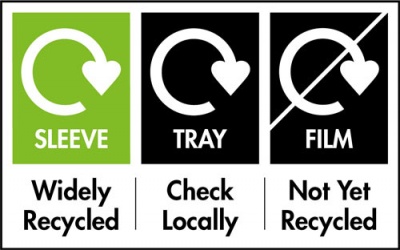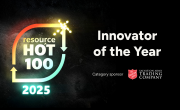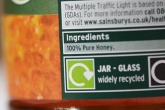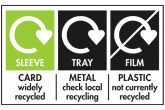Consumer confusion targeted by streamlined recycling labels
Recycling information on packaging is to be trimmed to make it simpler for consumers to understand and easier for retailers to use, the On-Pack Recycling Label (OPRL) scheme has announced.

Since its launch, the label has used the Recycle Now swoosh to show which components of a piece of packaging can be recycled in kerbside collections, using the following terms:
- Widely recycled (75 per cent or more of UK local authorities collect that type of packaging).
- Check local recycling (between 20 per cent and 75 per cent of UK local authorities collect that type of packaging).
- Not currently recycled (fewer than 20 per cent of UK local authorities collect that type of packaging).
Changes
Now, after a three-month review, the scheme is streamlining its messages, meaning that components will only be identified on complex packaging, and materials will no longer appear on the labels.
The move has been made to enable labels to be kept smaller, taking into account pressures on packaging space created by food information regulations (FIR) and other statutory requirements for labeling.
Wording used by the scheme has also been changed, with ‘Check local recycling’ being changed to ‘Check locally’, and ‘Not currently recycled’ changing to ‘Not yet recycled’, enabling the same information to be displayed in a smaller space without changing the text size.
The new designs will also allow producers to include advice on how materials should be recycled, after research by the Waste & Resources Action Programme (WRAP) found that pointers like ‘Cap on’, ‘Rinse’ and ‘Remove sleeve’ are valued by both consumers and recyclers.
 These bits of advice will mesh with the National Recycling Guidelines published by WRAP in October, which were created to give local authorities a consistent message to provide to residents regarding what can be recycled and how it should be presented.
These bits of advice will mesh with the National Recycling Guidelines published by WRAP in October, which were created to give local authorities a consistent message to provide to residents regarding what can be recycled and how it should be presented.
Labels changed to reflect ‘changing recycling landscape’
Commenting on the new look for the labels, Stuart Lendrum, OPRL Board director and chair of the review panel, said: “After nearly eight years, we’ve seen the further evolution of recycling in the UK. We needed to revisit the labelling with our goal to maximise effective recycling, the changing recycling landscape and our members in mind – that’s why we ensured stakeholders played a key role in this review.
“[R]ecycling in England, at least, is stalling and we want to help kick-start an up-turn. It’s one thing for packaging to be recyclable, it’s another to increase the quantity and quality of what’s being recycled. So we’ve looked at WRAP and other research on barriers, listened to consumer and member feedback, and re-designed our labels to be simpler, more impactful, easier to understand and to use.”
OPRL was established in 2009 and operated as an arms-length company by the British Retail Consortium. In 2015 however, the Alliance for Beverage Cartons and the Environment (ACE UK) became joint-owners followed by plastic recycling trade association RECOUP. The Local Authority Recycling Advisory Committee (LARAC) became the third industry body to buy into the scheme last October.
This new partnership has added views from the materials and collection part of the recycling chain to the label’s development, and the review of the guidelines also involved representatives from the retail sector (Co-op), consumers (Karen Cannard from The Rubbish Diet) and WRAP.
Helen Bird, WRAP adviser on the panel, added: “Our research shows there is considerable confusion about what can and particularly what cannot be recycled, and how it should be presented for recycling e.g. lids on, rinsed. Embracing consistent, simple calls to action within the on-pack labels will help to overcome confusion and improve material quality – ensuring that what is put into recycling is actually recycled.”
Karen Cannard commented: “People are looking for clear, consistent recycling advice that makes it easy for them to do the right thing. OPRL’s willingness to embrace changes that will help people recognise that advice – and inspire action on it – is to be applauded. With such high recognition rates already, the new simplified labels add impetus to the call to act on them!”
More information about the On-Pack Recycling Label can be found on the scheme’s website.








